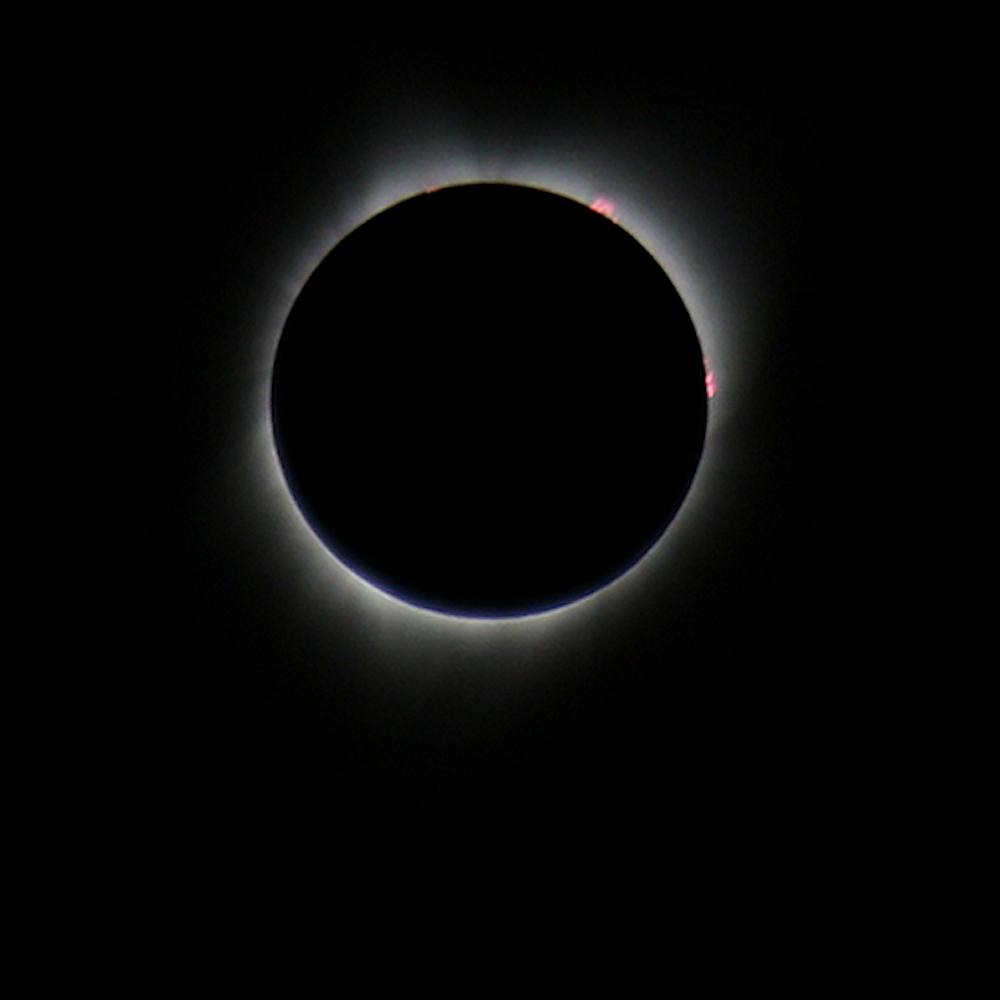Not total, but still totally awesome: Tips on viewing the April 8th partial solar eclipse from North Carolina
By AMY SAYLE
CHAPEL HILL, NC (April 1, 2024) – On April 8, 2024, the Moon will pass in front of the Sun and cast its shadow on Earth, creating a solar eclipse for most of North and Central America. For those in the roughly 115-mile-wide path of totality that passes through parts of the U.S., Mexico, and eastern Canada, this will be a total solar eclipse, with the Moon completely covering the Sun for up to 4 minutes and 28 seconds. This is the last total solar eclipse for the contiguous United States until 2044.
Although nowhere in North Carolina will the eclipse be total, North Carolinians can still have a totally amazing experience viewing the partial solar eclipse. What you need to know:
The action unfolds over about two and a half hours on Monday afternoon, April 8, 2024. In Chapel Hill, the eclipse begins at 1:58 p.m. Eastern Daylight Time, when the Moon first appears to touch the edge of the Sun. The Moon will seem to take progressively bigger bites out of the Sun until the maximum eclipse at 3:15 p.m. when about 80% of the Sun appears to be covered by the Moon. At 4:28 p.m., the eclipse ends.
Eclipse details vary a bit across the state. Find the times and percent maximum eclipse for YOUR location by consulting a website such as timeanddate.com (be careful—this site sometimes recognizes more than one location for a given place name) or this interactive Google map (subtract 4 hours to convert Universal Time to Eastern Daylight Time).

Adjust your expectations. If you didn’t know about the eclipse, you might not notice much or any difference in the North Carolina sky. Twenty percent of the Sun’s light is still a lot of light! After experiencing the 1979 Pacific Northwest total solar eclipse, the writer Annie Dillard described the difference between a partial and total solar eclipse as the difference between riding in an airplane and falling out of it. For the full mind-blowing experience, you must travel to the path of totality. Not merely close to it but all the way into it.
Check the weather. Although you don’t need 100% clear skies, it certainly helps your viewing experience if clouds aren’t doing their own eclipsing of the Sun.
View safely! Don’t take any chances here. You can damage your eyes permanently if you do the wrong thing. A few easy methods that are cheap or free:
- Wear eclipse glasses. For direct viewing, you need a special-purpose solar filter, such as eclipse glasses, designed for looking at the Sun. The American Astronomical Society warns about counterfeit and fake versions on the market, and their website lists suppliers of safe eclipse glasses (Morehead Planetarium sells eclipse glasses purchased directly from one of these safe suppliers.) Before using eclipse glasses, make sure they are not damaged; always supervise young children. Items NOT safe for viewing the Sun, no matter how dark the material is, include regular sunglasses, CDs, DVDs, and Mylar food wrapping.
- Use pinhole projection. Important: Do NOT look through the hole at the Sun! Your back should be to the Sun, and you allow the sunlight to pass through a small hole (or holes), which projects an image of the Sun. A 1-minute NASA video shows how to make a cereal box pinhole projector. But there’s no need to make anything. You can use a household object with small holes, such as a colander or straw hat. Or even your own outstretched fingers. Overlap them in a waffle pattern to create holes for sunlight to pass through. Or let our North Carolina trees do all the work: the gaps between tree leaves can act like pinhole projectors, putting images of the eclipsed sun onto the ground.
- You can also livestream the eclipse.
Important: To view the Sun with binoculars or telescopes, these devices MUST be equipped with proper ISO-certified solar filters that are correctly attached. Otherwise, you risk instant severe and permanent eye damage. (Your eclipse glasses will NOT protect you if you look through unfiltered binoculars or a telescope. Do not do this.) Also, don’t look through a camera at the Sun.
Join the crowd! It can be lots of fun to experience an eclipse with others. Many organizations are hosting eclipse viewing events as part of the NCSciFest’s annual North Carolina Statewide Star Party. Check the NCSciFest calendar for eclipse viewing and other science events during April.
Morehead Planetarium and Science Center will host an eclipse event on April 8, 2024, with safe eclipse viewing (weather permitting), hands-on astronomy activities, a livestream, and special eclipse-focused planetarium shows that simulate both a partial and total solar eclipse. Make some memories with us!
